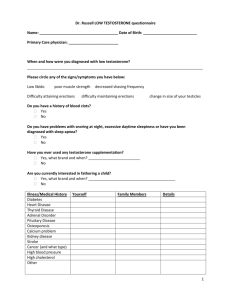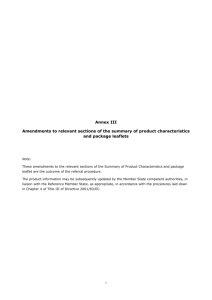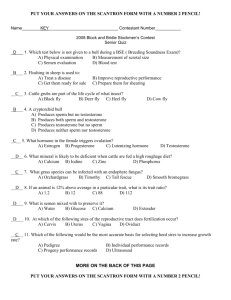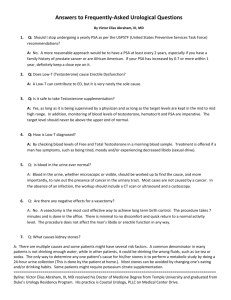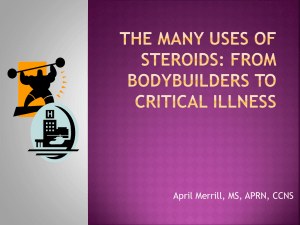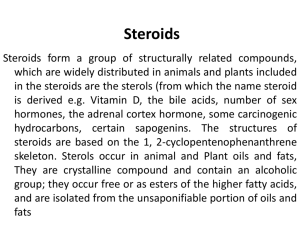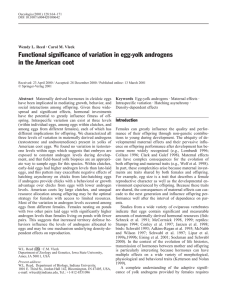ESM1 - Appendix S1 - Proceedings of the Royal Society B
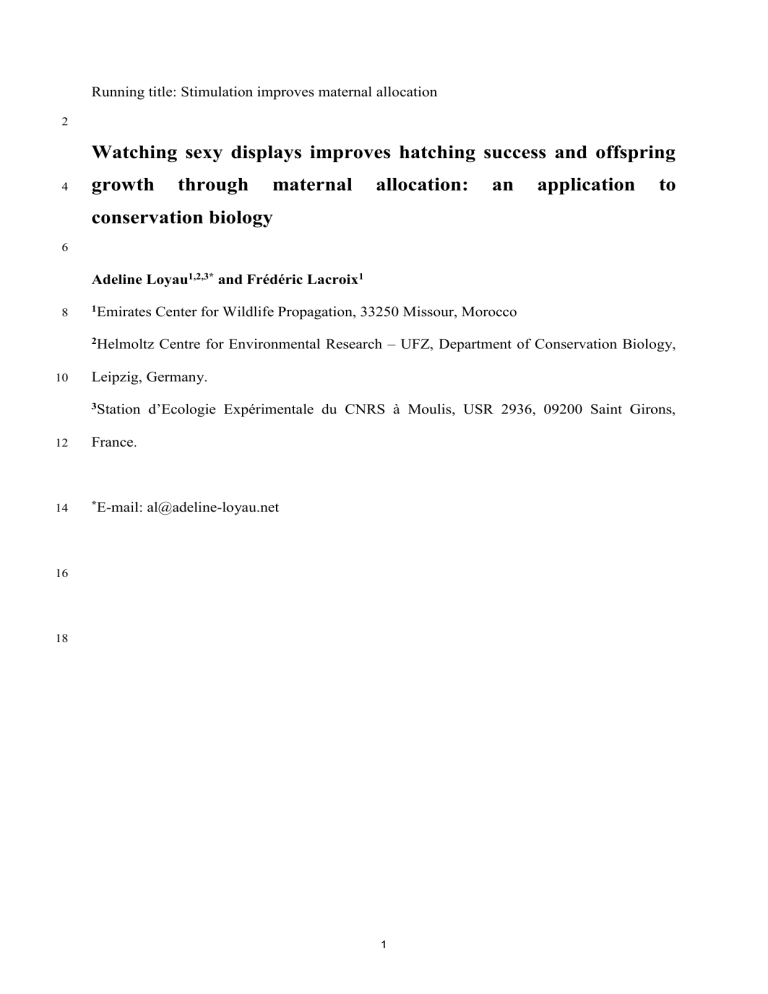
2
4
6
Running title: Stimulation improves maternal allocation
Watching sexy displays improves hatching success and offspring growth through maternal allocation: an application to conservation biology
8
Adeline Loyau 1,2,3* and Frédéric Lacroix 1
1 Emirates Center for Wildlife Propagation, 33250 Missour, Morocco
2 Helmoltz Centre for Environmental Research – UFZ, Department of Conservation Biology,
10 Leipzig, Germany.
3 Station d’Ecologie Expérimentale du CNRS à Moulis, USR 2936, 09200 Saint Girons,
12 France.
14
* E-mail: al@adeline-loyau.net
16
18
1
20
22
24
26
28
30
32
34
36
38
40
42
44
46
48
50
Electronic supplementary material 1
Appendix S1 Supplementary methods
Hormone Assays. We assessed testosterone and androstenedione levels in the yolk. To assess egg steroid levels, we took the eggs out of the freezer and left them at 4°C during 3 hours.
Albumen thaws faster than yolk, allowing for easy separation and treatment. After thawing, we recorded the yolk wet mass (to the nearest 0.01g). We mixed the yolk with a pestle and then with a magnetic stirrer in an equal amount (w/v) of distilled water for 15 min. We transferred aliquots of this 2x dilution into 1.5 ml Eppendorf tubes and froze them at -20°C until extraction. We extracted steroids from a sample of approximately the same volume of yolk/water emulsion that we weighted to the nearest 0.1 mg. We added 1 ml of ethyl acetate to the sample, vortexed for 30 sec and centrifuged for 15 min at 11000 r.p.m. at 4°C. We pipeted the supernatant into a new vial and let it evaporate over night at room temperature.
The residue was dissolved in 100 µl of extraction buffer provided by the manufacturer
(Neogen, Lexington, USA). For testosterone assays, the sample was diluted 20-fold. We did not dilute the samples before androstenedione assay. We extracted steroids from 100 µl of chick plasma and dissolved the residue in 70 µl of extraction buffer to concentrate the steroids before assay.
Steroid assays were performed in duplicate using a commercially available Enzyme
Immunoassay Kit (Neogen, Lexington, USA) according to the manufacturer’s protocol.
Briefly, we deposited 50 µl of sample in a well of an antibody coated microplate, added 50 µl of enzyme conjugate, then shook and incubated the plate at room temperature in a wet chamber for 1 h. We washed the plate four times with 300 µl of wash buffer and added 150 µl of substrate. After 30 min of incubation, we stopped the enzyme reaction with 150 µl of 1M
H
2
SO
4
and immediately read the plate at 450 nm with a spectrophotometer (SPECTRA
IMAGE, Tecan, Crailsheim, Germany). The measured values were analyzed with EasyWIN kinetics V6.0a and a standard curve was used to quantify steroid levels. When the concentration did not fit within the range of the standard curve, the samples were further diluted and re-assessed. Dose response of serially diluted extracts yielded a parallel slope to the standard curves, suggesting no sample matrix effects. The intra-assay coefficients of variation of testosterone, androstenedione and corticosterone were below 5 %and inter-assay coefficients were below 9%.
2
52
54
56
58
Cross reactivity for the testosterone antibody reported by the manufacturer was: testosterone (100 %), dihydrotestosterone (100 %), androstenedione (0.86 %), bolandiol (0.86
%), testosterone enanthate (0.13 %), estriol (0.10 %), testosterone benzoate (0.10 %), and other compounds had negligible cross reactivity (<0.06 %). Cross reactivity for the androstenedione antibody as reported by the manufacturer was: androstenedione (100%), estrone (1.50%), pregnenolone (0.20%), deoxycorticosterone (0.16%), estrone-3-sulfate
(0.16%), and other compounds had negligible cross reactivity (<0.08 %).
3

